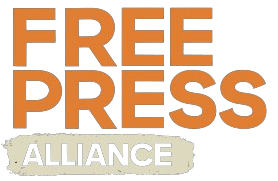AI is revolutionizing the world. People now use it for everything from answering questions to offering recommendations, making it an indispensable tool, especially for younger generations.
For journalists, staying up to date with this technology is essential. Artificial intelligence can assist in many aspects of journalism: from finding reliable sources and drafting articles to verifying facts, AI can support and streamline nearly every step of the reporting process.
But with great power comes great responsibility. Journalists must know how to use AI ethically and effectively to enhance the quality of their work without compromising its integrity.
- Using AI to Search for Information: to search for information you need to consider the reliability of the source and the prompt you are asking for the tool to give you the best answer possible.
Smarter Querying
AI tools like ChatGPT, Bing Copilot, and Perplexity can help refine search terms and generate fast background knowledge on complex topics. Journalists can use these tools to brainstorm questions, gather context, or explore potential angles before diving into traditional research.
Exploring Multiple Sources
AI-assisted search engines can present multiple perspectives, helping reporters identify bias or gaps in coverage. For instance, AI can compare how different media outlets report on the same story, an essential step in verifying accuracy, maintaining balance, and ensuring impartiality in the information journalists choose to include.
Search Accelerators
Using tools like Google Fact Check Explorer or Media Bias/Fact Check alongside AI search enables faster discovery of trustworthy sources and more efficient fact-checking. However, journalists must exercise caution, as AI tools like ChatGPT can sometimes generate false URLs or fabricated references in an effort to be helpful. Always verify any links provided before using them.
- Using AI to Write Content: writing content using AI can be helpful for grammar, structure, and language support. However, it’s important to keep in mind that AI-generated text can often sound less human, which may affect your ability to connect with your audience or convey the emotion you want to express in your article.
Drafting and Structuring Articles
AI can help structure a story, suggesting outlines, headlines, and even potential leads based on provided information. This can speed up the writing processes, especially helpful when working on tight deadlines but the journalist must always revise for accuracy, tone, and context.
Language and Translation Support
AI-powered translation tools such as DeepL or ChatGPT can help reporters working across languages, especially when interviewing sources or reading foreign-language documents. Always verify translations, particularly for sensitive content.
Transcription and Summarization
Tools like Otter.ai and Whisper transcribe interviews accurately and quickly. AI-generated summaries also help distill long reports into digestible insights.
- Using AI to Verify Information: Artificial Intelligence offers powerful tools to help journalists verify facts quickly and efficiently, but it must be used carefully to ensure accuracy and credibility.
Image and Video Verification
With the rise of manipulated media, tools like InVID, Hive Moderation, and Google Lens can help verify authenticity. AI can assist in analyzing metadata, detecting inconsistencies, and flagging potentially altered visuals.
Cross-Referencing Claims
LLMs can assist in quickly checking claims against known databases or news sources. However, AI sometimes “hallucinates” false information, so any claims generated by an AI should be independently confirmed.
Detecting AI-Generated Text
Tools like GPTZero or AI Writing Check can help identify content that may have been produced by machines, aiding in authenticity checks during investigations.
Best Practices and Ethical Guidelines
- Disclose AI Use: Be transparent when AI contributes significantly to a piece.
- Don’t Rely Solely on AI: Always validate facts, especially in sensitive reporting.
- Protect Sources: Use caution when uploading sensitive data into AI platforms.
- Understand AI Limitations: Recognize that biases in training data can skew results.
Conclusion
AI is not a replacement for journalistic rigor, but a tool that when used thoughtfully can enhance research, writing, and verification. By embracing AI with a critical mindset and strong ethical standards, journalists can uphold their commitment to truth while navigating an increasingly complex information landscape.

